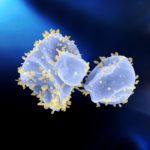Lien vers Pubmed [PMID] – 38589217
Lien DOI – 10.1111/1758-2229.13258
Environ Microbiol Rep 2024 Apr; 16(2): e13258
DNA methylation serves a variety of functions across all life domains. In this study, we investigated archaeal methylomics within a tripartite xylanolytic halophilic consortium. This consortium includes Haloferax lucertense SVX82, Halorhabdus sp. SVX81, and an ectosymbiotic Candidatus Nanohalococcus occultus SVXNc, a nano-sized archaeon from the DPANN superphylum. We utilized PacBio SMRT and Illumina cDNA sequencing to analyse samples from consortia of different compositions for methylomics and transcriptomics. Endogenous cTAG methylation, typical of Haloferax, was accompanied in this strain by methylation at four other motifs, including GDGcHC methylation, which is specific to the ectosymbiont. Our analysis of the distribution of methylated and unmethylated motifs suggests that autochthonous cTAG methylation may influence gene regulation. The frequency of GRAGAaG methylation increased in highly expressed genes, while CcTTG and GTCGaGG methylation could be linked to restriction-modification (RM) activity. Generally, the RM activity might have been reduced during the evolution of this archaeon to balance the protection of cells from intruders, the reduction of DNA damage due to self-restriction in stressful environments, and the benefits of DNA exchange under extreme conditions. Our methylomics, transcriptomics and complementary electron cryotomography (cryo-ET) data suggest that the nanohaloarchaeon exports its methyltransferase to methylate the Haloferax genome, unveiling a new aspect of the interaction between the symbiont and its host.

